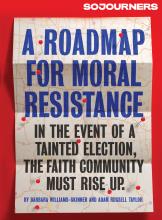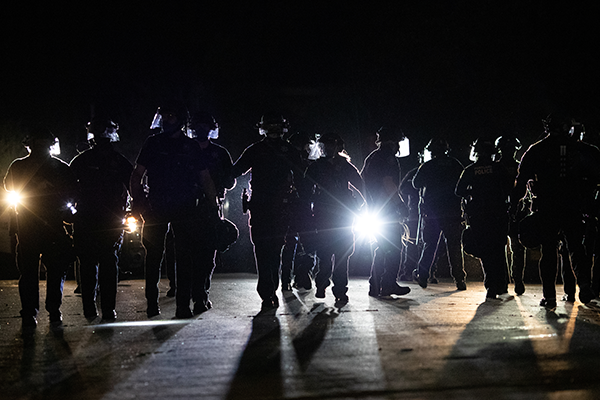NONVIOLENT PEACEFORCE is an international nonprofit that works with communities facing violence to implement nonviolent strategies to help keep them safe. They have worked with communities around the world, including in Sri Lanka, Iraq, South Sudan, and Guatemala. Mel Duncan, Rosemary Kabaki, and Jessica Skelly of Nonviolent Peaceforce spoke in mid-September with Sojourners’ Betsy Shirley about their newest project location: the United States.
Sojourners: Why did you start projects here in the U.S. this fall?
Mel Duncan: We recognize that right now there are many indicators of looming violence, whether it be strife over police brutality and racism, or the chaos that is being stirred up around the election, or the catastrophic experiences we’re seeing with climate change—all of these can trigger violence.
What risks do you see?
Jessica Skelly: As we look toward the elections and beyond, we can see some indicators for flashpoints of violence—election tampering, delays in the election, perhaps continued police brutality, instigation by agents provocateurs—and people want to know how they can mobilize in responsible and constructive ways and help de-escalate some of that violence and protect themselves.
Read the Full Article

